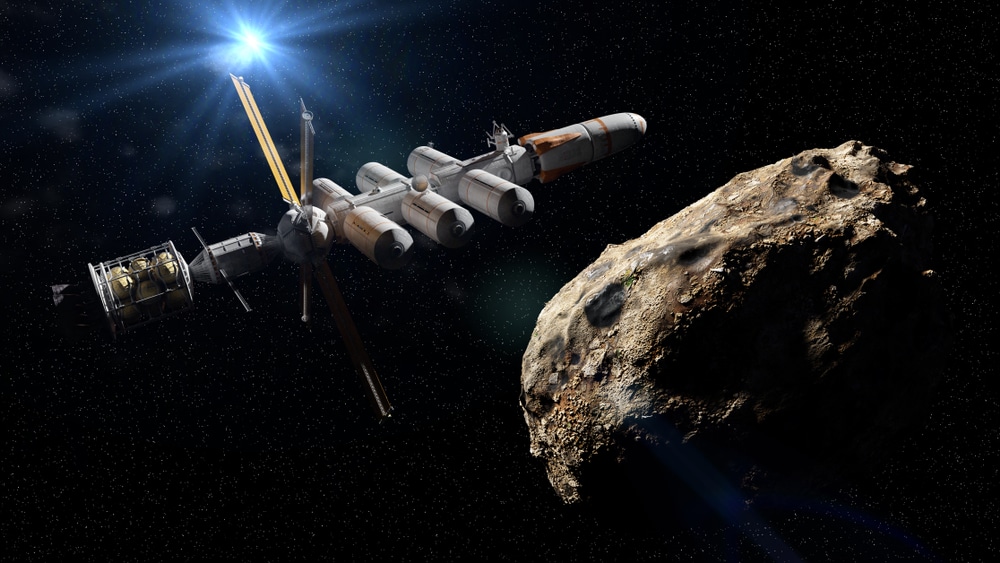In less than 24 hours, NASA will intentionally crash a spacecraft into an asteroid at 15,000mph. Such a mission may evoke memories of a Hollywood disaster movie such as Armageddon or Deep Impact, but this is very much real and is actually part of the US space agency’s first-ever planetary defence test. Of course, there is no actual risk to Earth. This is merely an experiment that, if successful, could one day pave the way for protecting our planet from a catastrophic impact from space.
The Double Asteroid Redirection Test (DART) was launched last November ahead of an almost year-long journey to crash into the small asteroid Dimorphos, which orbits a larger one called Didymos.
Didymos and Dimorphos will make their closest approach to Earth in years in late September, passing at a distance of about 6.7 million miles (10.8 million kilometres) from our planet. The impact is due to take place on Monday (September 26) at 19:14 ET (00:14 BST Tuesday) and can be watched live on NASA TV and the agency’s YouTube channel.
Rome-based Virtual Telescope Project has also teamed up with several observatories in South Africa, and will be showing the target asteroid in real-time at the moment of the scheduled impact. The animation and graphic below shows how the mission will work, while MailOnline also explains the test’s purpose and how it compares to a couple of the more famous asteroid-related disaster movies.
Astronomers say that anybody tuning it to watch the impact may well be able to spot changes in brightness of the asteroid as a result of the collision. That’s if it is successful, of course, which wasn’t quite the case in Deep Impact. The 1998 film depicts the attempts to prepare for and destroy a 7-mile (11 km) wide asteroid that is set to collide with Earth and cause a mass extinction.
A team of astronauts are sent to land on the space rock and drill nuclear bombs deep beneath its surface, but rather than deflect the asteroid, when they’re detonated they only split it in two.
The smaller fragment goes on to hit Earth, creating a megatsunami that destroys much of the East Coast of the United States and also hits Europe and Africa, before the spacecraft and its crew that deployed the nuclear bombs sacrifice themselves by crashing into the bigger remnant of the asteroid and blowing it into smaller pieces.
It is the latter technique that bears a similarity to the real-life DART mission, although there won’t be any nuclear bombs involved. Part of the reason is that when the $325 million (£240 million) DART craft hits Dimorphos, the plan is for it to change the speed of the ‘moonlet’ by a fraction of a percentage, rather than obliterate it.
Although the 525ft-wide space rock doesn’t pose a danger to Earth, NASA wants to measure the asteroid’s altered orbit caused by the collision. This demonstration of ‘planetary defence’ will inform future missions that could one day save Earth from a deadly asteroid impact.
‘This isn’t going to destroy the asteroid. It’s just going to give it a small nudge,’ said mission official Nancy Chabot of Johns Hopkins Applied Physics Laboratory, which is managing the project. Dimorphos completes an orbit around Didymos every 11 hours and 55 minutes ‘just like clockwork’, she added. DART’s goal is a crash that will slow Dimorphos down and cause it to fall closer toward the bigger asteroid, shaving 10 minutes off its orbit. (Daily Mail)


















